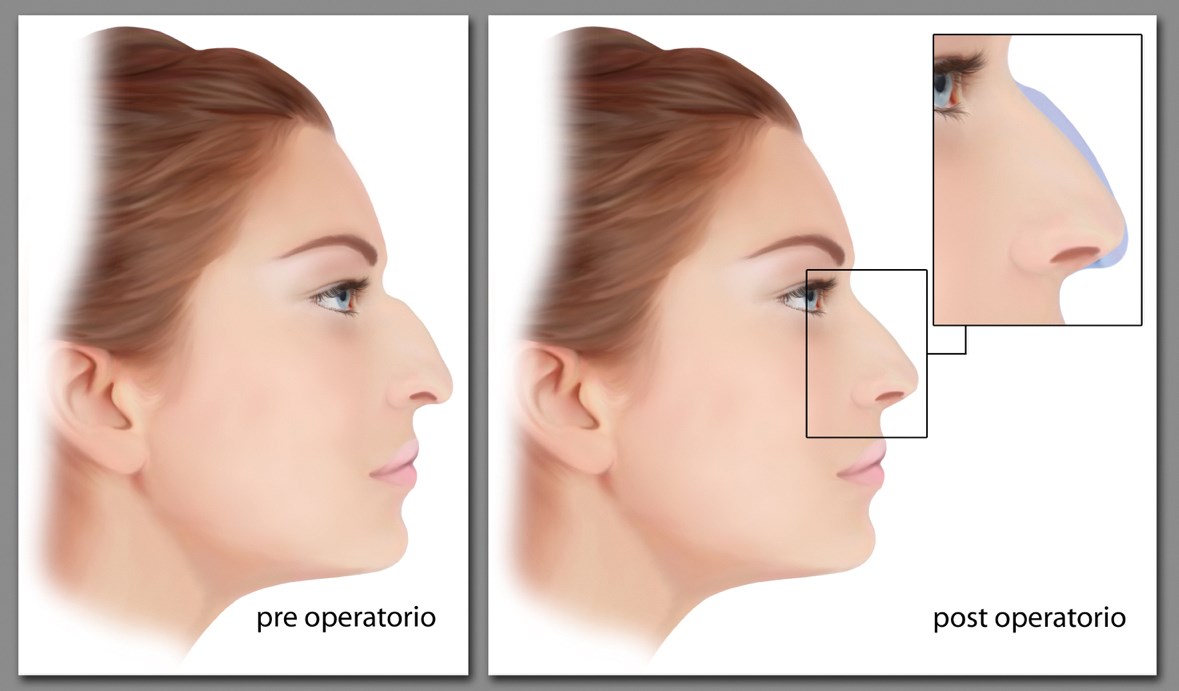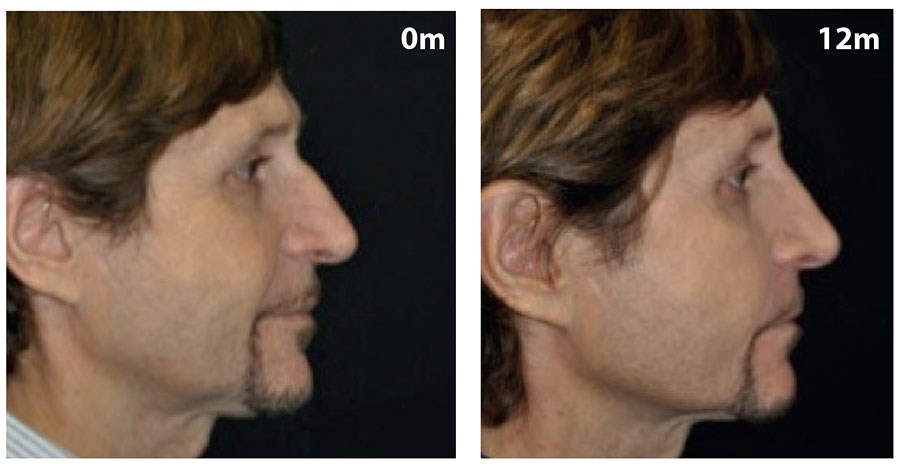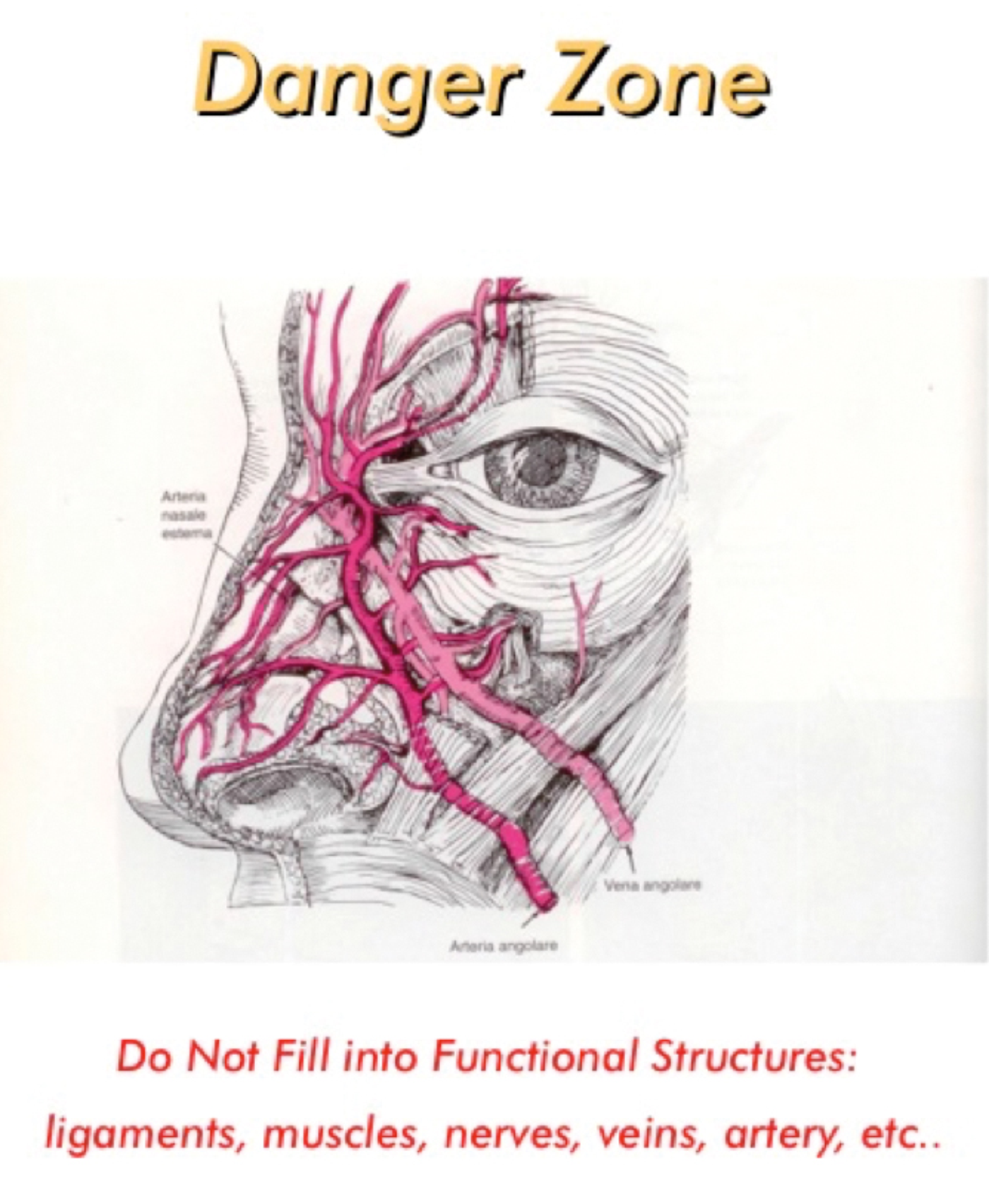Nose reshaping, often inappropriately referred to as the ‘non-surgical rhinoplasty’, is one of the procedures where good outcomes are more difficult to achieve when using dermal fillers alone. The alternative has usually been to perform a conventional surgical rhinoplasty and to use the fillers for the fine-tuning of any residual contour defects.
More recently though when considering the shape and harmony of the facial features there is an increasing trend to use only fillers for both nose and chin.
Advanced fillers (typically the newer generation of cross linked hyaluronic acid based fillers) are the first choice among fillers for the correction of the nose profile due to their softness, duration and natural results with final complete reabsorption.
Figure 1: The ‘danger zone’.

Figure 2: Before and after an operation to reshape the nose.

Figure 3: A 49-year-old patient, no previous dermal filler
treatment with a deficit of nasal bone projection.
Anatomy
The nose triangle is the middle of the face where a little modification can create a significant change in appearance. It is useful in this context to regard the nose as a system of two interrelated layers. We are interested in the outer layer, which like a knitted elastic sleeve, slides over the entire investing nasal subcutaneous tissues plus alar cartilages and their associated lining.
Injection technique
Prior to treatment, the patient should be fully assessed and informed of the risks, complications and expectations, and an informed consent obtained to perform the procedure. Of note, point out any pre-existing asymmetries, advise patients that specific cheek lines or smile lines may not completely disappear following treatment and discuss the procedure, anaesthesia (local infiltration or regional nerve block) and any potential adverse effects. Ensure good, standardised before and after pictures are taken.
The subdermal / subcutaneous plane can be manipulated quite freely and painlessly. Dermal fillers should be injected using a retrograde linear threading technique involving fanning. The cannula or needle tip should remain in the skin whilst fanning. (Although the recognised layer to inject fillers in nose modulation is the supraperiosteal layer, this is present in the upper third of the nose only, while the lower part has just smooth cartilage and heavy skin.) Each thread injected should consist of 0.05-0.1ml and the total volume on each side will usually be between 0.5-1ml. Following treatment, the skin is gently cleaned and gently massaged. Appropriate aftercare instructions must be provided, together with arrangements for a follow-up appointment.
Botulinum toxin is also used for nose reshaping in some cases, including:
- tension nose
- hypertonic depressor septi muscle
- presence of ‘bunny lines’.
Declaration of competing interests: The author would like to declare the following competing interests: AQTIS Medical Advisory Board + FCS; General topics: opinion leader (KOL); Sinclair: opinion leader (KOL); IBSA Academy: opinion leader (KOL); Merz Aesthetics: opinion leader (KOL) + FCS; BIOFORM Medical: investigator + FCS.
COMMENTS ARE WELCOME






